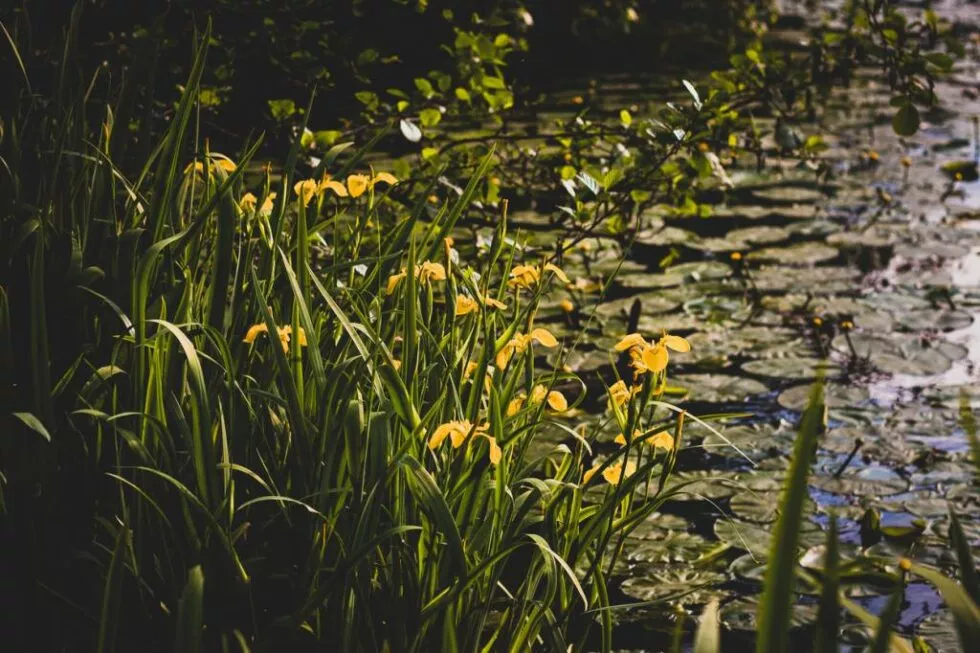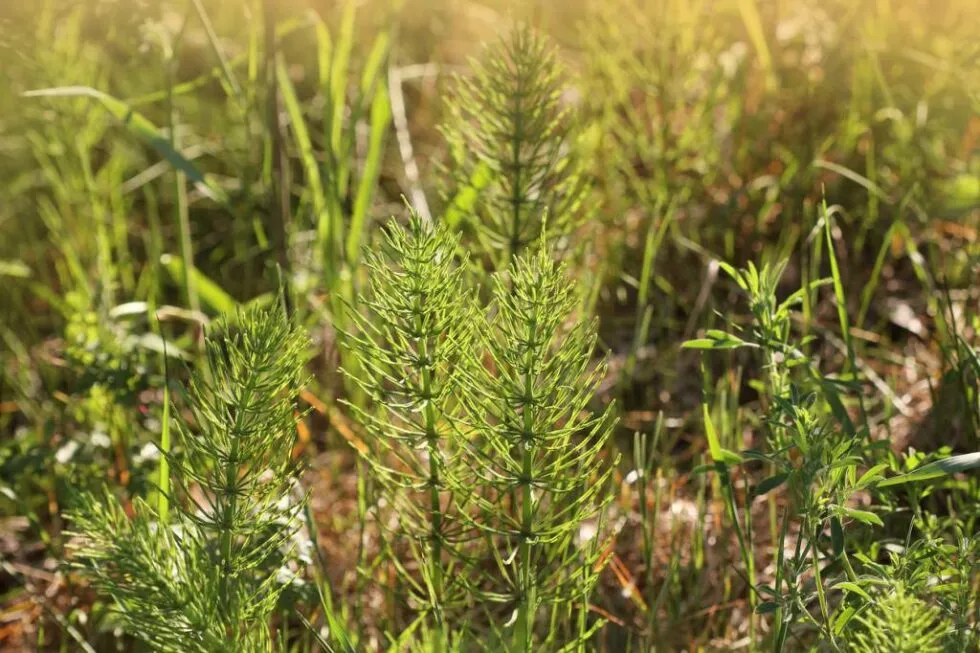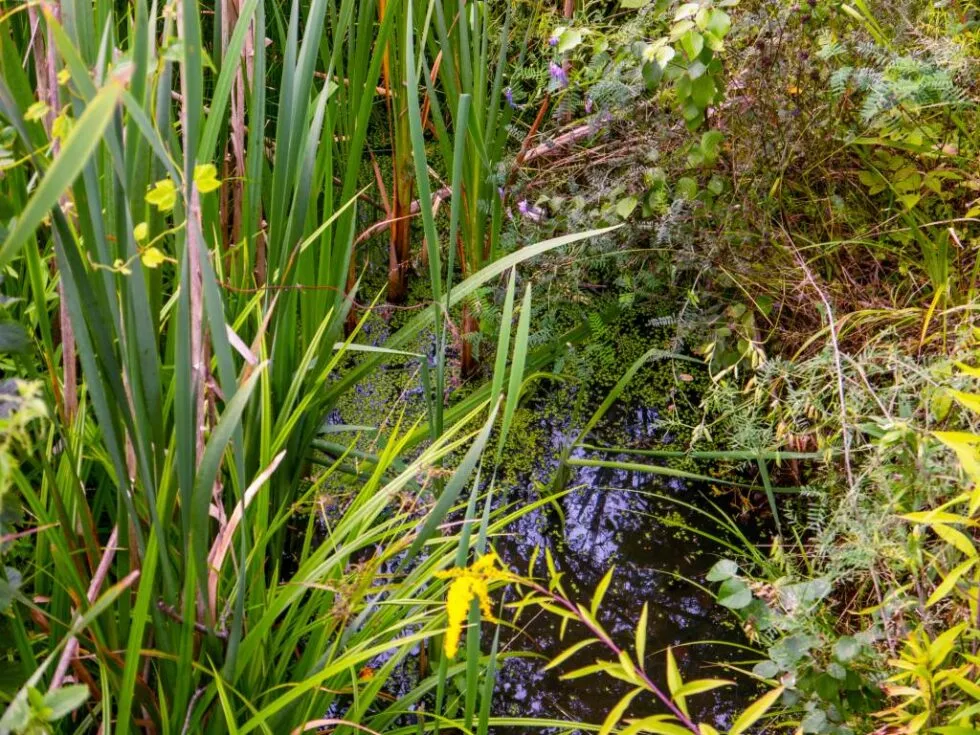Phyto-purification and wastewater treatment
Phyto-purification is now a safe bet for the management and disposal of effluents from private buildings not connected to the collective sewer system. It is a natural wastewater treatment technique. It involves bacteria developing on the root system of aquatic plants to absorb and break down pollutants. How does a plant-based Sanitation Garden work? Which plants should be used to effectively create an individual ecological sanitation system? Aquatiris, the leading expert in phyto-purification solutions in France, specialises in the natural filtration of polluted water using plants.
How does phyto-purification work?
The aim is to create a small ecosystem locally based on the water purification processes that take place in ponds, lakes and marshes. This involves using filters planted with aquatic purifying plants to eliminate the pollutants that make effluents unsuitable for release into the natural environment. These pollutants include phosphates, nitrates, heavy metals and infectious biological agents. Generally, the treatment of polluted water by plants is organised around two main stages.
Pre-treatment of wastewater
The effluents stored in an all-water septic tank is channelled to the primary natural purification basin. This phyto-purification basin contains a filtering substrate of gravel and sand to allow the large organic particles to float. A reed planted filter is also generally installed. The aerobic bacteria and micro-organisms that develop around the roots of the common reed take care of digesting the soluble organic matter present in the wastewater. The large, non-soluble substances are composted on the surface of the water.
The compost can be recovered later to fertilise the soil of the garden or your agricultural crops. Thanks to the wind, which moves the stems of the purifying aquatic plants, the substrate of the primary ecological sanitation basin is properly aerated. This avoids the clogging phenomenon that renders traditional septic tanks almost unusable 5 to 7 years after their creation. After this first stage of phyto-purification, the water obtained can potentially be discharged into nature.

The treatment phase
The water from the previous natural purification stage is channelled into a treatment basin, often located below the first one. Here, there is a planted filter with ornamental plants that absorb a lot of nutrients such as sedges, blue flag irises, water mint and purple loosestrife.
To finalise the process, the compost particles that have remained at the level of the dense rhizomatous system are transformed into mineral nutrients. The water obtained at the end of the phyto-purification process can be safely discharged into its natural environment.
The advantages of phyto-purification
To really enjoy the benefits of phyto-purification, your natural wastewater purification system using plants must be installed by a recognised and certified company such as Aquatiris. You can benefit from a sanitation garden that is quick and easy to install, whether your building is in a suburban or rural area. The phyto-purification solution remains effective all year round as the plants that make up the filters thrive in both sun and shade. They can also withstand low temperatures (between -15 and -28⁰C).
Phyto-purification, an economical method of treating effluents
Compared to conventional solutions, the installation of an individual sanitation system offers a long-term economic advantage. The greywater and blackwater phyto-purification gardens are sustainable and totally autonomous. There is no need to replace the plants in the filter with new specimens every year. It is sufficient to mow the area once a year and it is not necessary to clean the filter planted with Phragmites, Irises or Carex plants for 10 years. It is also not necessary to empty it, as is the case with a traditional septic tank. The cost of the initial investment in a phyto-purification system is significant, but the considerable reduction in maintenance costs of your natural solution is a real bonus.
The Sanitation Garden, an outdoor decorative feature
Thanks to phyto-purification, it is possible to combine usefulness with pleasure by filtering wastewater and beautifying your outdoor space. Decorative and filtering plants are chosen taking into account the owner’s taste in terms of the layout of the adjoining undeveloped land. Ecological sanitation systems using plants do not cause stagnation of foul-smelling water near the property. Mosquitoes cannot develop there.
Phyto-purification, an ecological process
Serious and environmentally responsible companies use only substrates and purifying plants from the customer’s region, if possible. By using local products to construct the natural sanitation system using plants, the carbon footprint of the operation is significantly reduced. Building a personal garden to filter water naturally reduces the workload and energy consumption at collective treatment plants. Your individual ecological wastewater treatment system does not consume any electricity either. The compost obtained can be reused according to the customer’s needs.

How much does a phyto-purification sanitation system cost?
The price of a sanitation system using plants depends on numerous factors that must be carefully examined during the feasibility study. Through a soil study, the specialised company evaluates the configuration of the land, the nature of the soil and its dynamic resistance as well as the permeability of the strata. The results are used to decide whether a vertical or horizontal flow filter is the ideal solution for wastewater treatment. Depending on the pollutants to be removed, it is also possible to choose the substrates and filter plants best suited to the project.
The expert in individual phyto-purification solutions must also assess the size of the installation, the spreading methods and the options for the discharge of treated water. To do this, it is necessary to consider the number of inhabitants in the house and the desired landscape after the development work. Choosing officially approved solutions will be more expensive than choosing unapproved devices. Don’t hesitate to contact the Aquatiris teams to quickly obtain a personalised and reliable quote for your ecological individual sanitation work.
Which plants are used for phyto-purification sanitation?
For optimal functioning of your natural wastewater purification basin, your specialised company of reference will be able to find the most effective plants for each stage of the process. These are generally aquatic or semi-aquatic species that thrive in wetlands, such as marshes, swamps or ponds, along riverbanks, etc. They need a large amount of nutrients of organic or mineral origin to grow quickly, with their rhizomatous part submerged.
Our company offers you a reed planted filter for effective one-stage filtration. You can also choose the two-level Iris Sanitation Garden: a filter planted with phragmites placed before a flowered filter composed of irises, purple loosestrife and water mint. We also offer the Carex phyto-purification system which consists of a wooden prefilter and a very dense vegetated filter. This is made up of common reed, river reed, blue flag iris, purple loosestrife, water mint, meadowsweet and reed mace.
Some of these plants are invasive, but we know how to regulate their population in your ecological individual sanitation solution. The Iris and Carex ranges are very popular because they offer an optimal level of liquid effluent purification and have an undeniable aesthetic advantage. The combination of different flowering plants provides a beautiful display of colours and shapes in the outdoor green space.

Opt for approved sanitation systems
In France, Aquatiris is a key reference when it comes to the development of natural wastewater treatment and disposal systems. Our systems are aimed at a wide audience, including owners of houses not connected to the public sanitation network, holiday cottages or campsites. Agricultural estates and hamlet-style housing can also benefit from them. Our customised wastewater treatment solutions have been approved by the Ecological Transition and Health ministries. The device of the Roseaux range has the European CE marking. Our filtration and drainage system of the Iris range has passed all the tests of the specialised French protocol for verifying the quality, reliability and durability of products.
We also have EC marking for our Carex solution. Choosing a device with EC marking allows you to invest in your individual liquid waste disposal project in a sustainable and secure way. No matter where your building is located in France, our dynamic network puts you in touch with highly qualified experts and installers to plan and carry out your project from A to Z.

